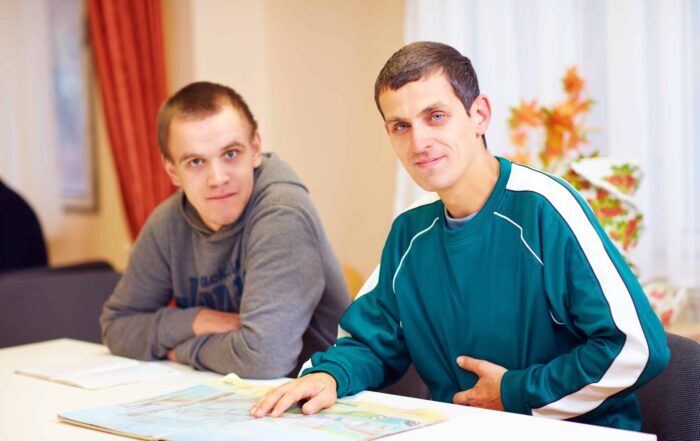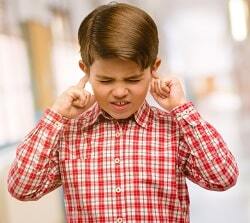Lindsey Biel, MA, OTR/L, describes the complexities of sensory systems, how they impact daily activities and learning, and the importance of positive sensory support. She outlines the sensory systems, noting differences in lived experiences for autistic persons, and discusses support techniques based on sensory understanding. Biel emphasizes the nature of stimming and sensory meltdowns and prescribes sensory diets/programming techniques. She concludes with ideas and links for supportive sensory activities, clothing, resources, and more.
Take the knowledge quiz for this presentation HERE
In this presentation:
3:00 – Sensory processing defined
6:18 – Sensory modulation profiles
12:00 – 38:23 – Sensory system definitions, differences, and support techniques
38:54 – Stimming
45:13 – Meltdowns
54:41 – Daily sensory diets/programming
58:40 – Adolescent sensory diets
1:12:24 – Self-care skills
1:01:03 – 1:11:00 – Recommended activities and resources (links provided)
Summary:
Sensory processing (3:00) is how people learn about the world and where our bodies fit into our surroundings. It is generally an automatic process that transforms sensory information into meaningful messages which are used to learn body function and behavior. Due to unusual nervous system wiring, individuals with sensory variations take in and use sensory inputs differently. For individuals with severe sensory challenges, daily activities can become annoying and painful (5:27). The results range from “quirks” to severe sensory disruption, which is understood as autism spectrum disorder.
There are four sensory modulation profiles (6:18):
– Hypersensitive – Easily overloads, on high alert, rigid
– Hyposensitive – Underaroused, tuned out
– Sensory seeking – Always hungry for more input
– Mixed reactivity – Sensory load shifts based on situation and multisensory processing
The presenter describes sensory overload using the analogy of a paper plate (10:40) at a picnic that can hold a large amount of food. However, the last scoop of salad breaks the plate, and it becomes clear that either you need a more robust plate, less food, or both. Understanding the various sensory systems can prevent sensory overload. Individual sensory systems vary and may be unique for some individuals with autism. Biel defines and describes sensory challenges associated with tactile processing (12:00), auditory processing (18:47), visual processing (21:58), taste and smell (27:43), vestibular processing (30:15), proprioception (34:06), and interoception (37:39). Some people experience one or more of these sensory channels (38:24), making a balanced sensory load challenging to maintain. She presents common sensory processing differences experienced by individuals with autism and offers simple support mechanisms and thought processes to assist in daily activities.
Sensory issues are a complex and often overlooked issue for individuals on the autism spectrum. Hear occupational therapist Lindsey Biel provide tips for successfully supporting children and teens who struggle with sensory discomfort and pain.
Take the knowledge quiz
Can’t see the quiz below? Take it online HERE
Effective Coping Strategies for Sensory Differences and Executive Function
Drs. Greg Wallace and Goldie McQuaid share their research on strategies autistic adults develop to compensate for non-social challenges they experience, including sensory sensitivities and executive function differences. Handouts are
Sensory Considerations for Social Communication
Printable handouts are online HERE Presented by: Vanessa Rentschler, Au.D., CCC-A, C.A.S. is a clinical audiologist and owner of Audball Paradigm, LLC (private practice) who
Sensory issues may be a factor in substance use in individuals with autism
Sensory issues may play a role in elevated levels of substance abuse in individuals with autism spectrum disorders (ASD), according to a new study from the Netherlands. Frank van den Boogert and
Pain, Sensory Issues and Autism
Dr. Tami Bar-shalita, Merry Kalingal Levi, and Dr. Yelena Granovsky explore the intricate connections between pain, sensory perception, and autism. They discuss quantitative and qualitative research findings that shed light on the
Editorial: Revisiting Two Lesser-Known Teaching Strategies to Enhance Speech Production in Autism
In this editorial, I would like to shed light on two methods for improving the speech production of individuals on the autism spectrum, discuss potential neurological factors that may underlie their effectiveness,
Study investigates responses to pain in individuals with autism
A new study offers insights into the responses of adults with autism spectrum disorders (ASD) to painful stimuli. Tseela Hoffman and colleagues investigated pain perception in 104 adults, 52 of whom were








